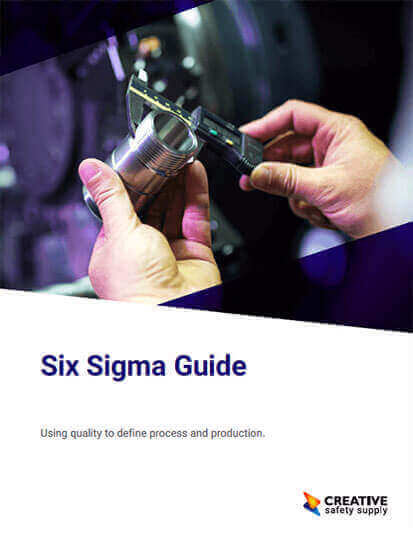
There are many similarities between Six Sigma and Kaizen, but ultimately, what makes them differ is that Six Sigma is built to improve one specific area, which is quality of product/services provided. Kaizen is a more general, since its goal is to have companies strive toward continued improvement across the board. Six Sigma’s goal is to decrease the chance of deviation in a production cycle as much as possible. More specifically, Six Sigma aims to have fewer than 3.4 defects per million production cycles. It’s through the reduction of defects or deviations that Six Sigma combats one of the 8 Wastes of Lean: Defects. The other wastes are: Overproduction, Waiting, Non-utilized talent, Transportation, Inventory, Motion, and Excessive processing.
Like many Lean manufacturing methods, Kaizen and Six Sigma are founded on the same principles.
Process Improvement—Companies should take consistent action to eliminate root causes of deficiencies within its production processes.
Process Design (or re-design)—Don’t be afraid to challenge, question, or revamp existing processes to be more consistent, efficient, and simple.
Process Management—This element demands workers take actions like defining processes, measuring performance, and analyzing data so that company has better understanding of production and therefore can pinpoint where processes need to be improved.
Kaizen principles:
Management—In Kaizen, management functions in two ways: maintenance and improvement. Maintaining standards is just as important as keeping them, and management’s primary roles is to maintain the technological and operating standards that have already been established.
Process versus Results—Much like the Philadelphia 76ers under Sam Hinkie, Kaizen considers process the holy grail. Often, managers focus too much on results and not enough on results; Kaizen realizes that improving the process will improve the result.
Quality First—Quality is the highest priority in a Kaizen system, but quality isn’t just measured by finished product. In this case, quality also refers to the processes and standards by which the product is made.
Visual Management—Another major element of Kaizen is visual management. Opportunities for improvement are easily missed if you can’t see them. Therefore, building an environment where tools, supplies, and processes are visually marked makes it easy to spot when something is out of sync.
Six Sigma and Kaizen share similar objectives, but differ in scope and specificity of mission.
Similar Questions
- What is Six Sigma?
- How can Six Sigma help a company?
- Is Six Sigma Lean?
- What are the benefits of Six Sigma?
- Can Six Sigma be used in service industries?
- What is Design for Six Sigma?
- How can Six Sigma be used in project management?
- How can Six Sigma be used in healthcare?
- Who can do Six Sigma?

